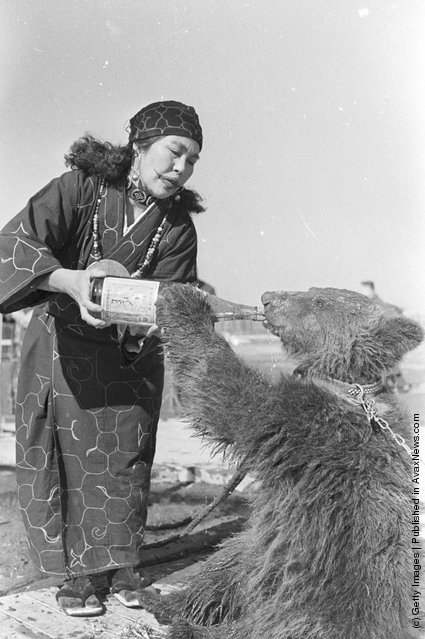
“The Ainu (アイヌ?), also called Aynu, Aino (アイノ), and in historical texts Ezo (蝦夷), are indigenous people or groups in Japan and Russia. Historically they spoke the Ainu language and related varieties and lived in Hokkaidō, the Kuril Islands, and much of Sakhalin. Most of those who identify themselves as Ainu still live in this same region, though the exact number of living Ainu is unknown. This is due to ethnic issues in Japan resulting in those with Ainu backgrounds hiding their identities and confusion over mixed heritages. In Japan, because of intermarriage over many years with Japanese, the concept of a 'pure Ainu' ethnic group is no longer feasible. Official estimates of the population are of around 25,000, while the unofficial number is upwards of 200,000 people”. – Wkipedia
Photo: A captive bear drinking from a large bottle held by an Ainu tribeswoman. (Photo by Evans/Three Lions/Getty Images). Circa 1955
Photo: A captive bear drinking from a large bottle held by an Ainu tribeswoman. (Photo by Evans/Three Lions/Getty Images). Circa 1955
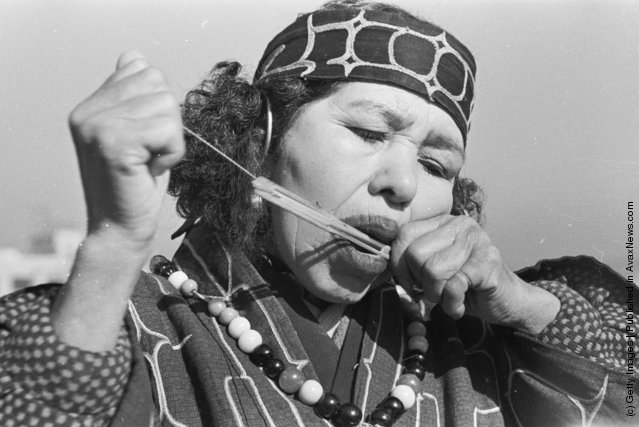
An Ainu tribeswoman holding a group of threads to her mouth. (Photo by Evans/Three Lions/Getty Images). Circa 1955
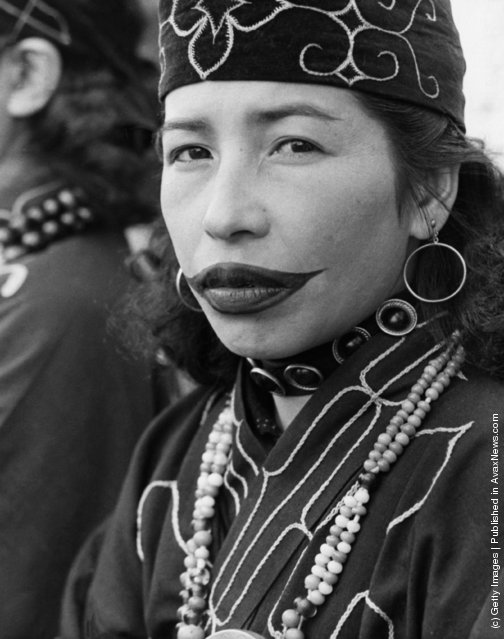
An Ainu woman from northern Japan with tattooed lips. The upper lip is slashed during childhood and ashes are rubbed in to leave a scar. (Photo by Three Lions/Getty Images). Circa 1960
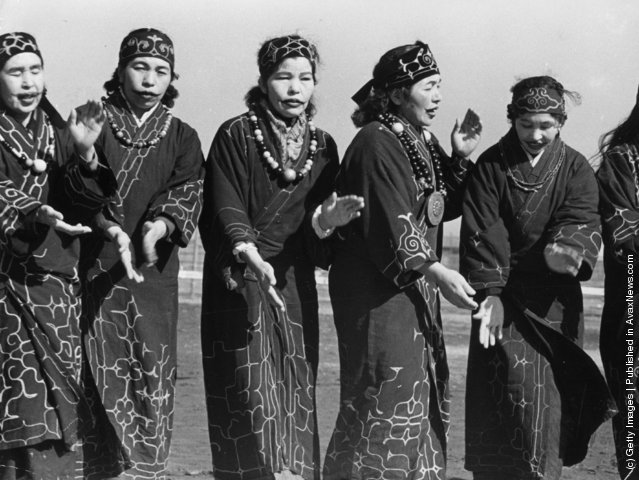
Ainu, aboriginal people of Asia occupying parts of the Japanese island of Hokkaido, Russian Kuril Islands and Sakhalin. (Photo by Three Lions/Getty Images). Circa 1950
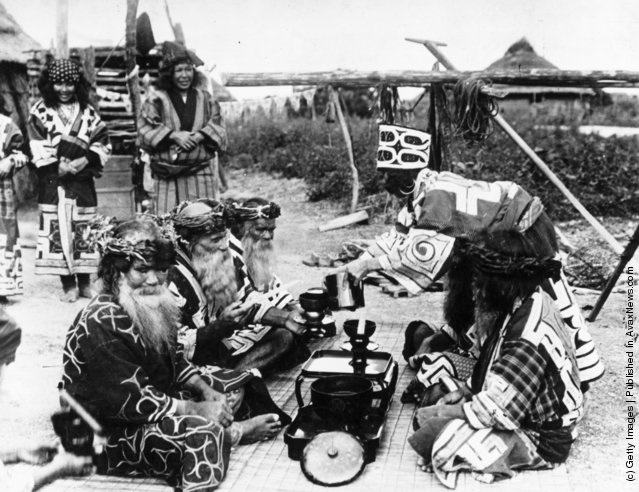
The Ainu people of Japan and eastern Russia, noted for their prolific facial hair, circa 1930. (Photo by General Photographic Agency/Hulton Archive/Getty Images)
24 Mar 2011 14:01:00,
post received
0 comments
